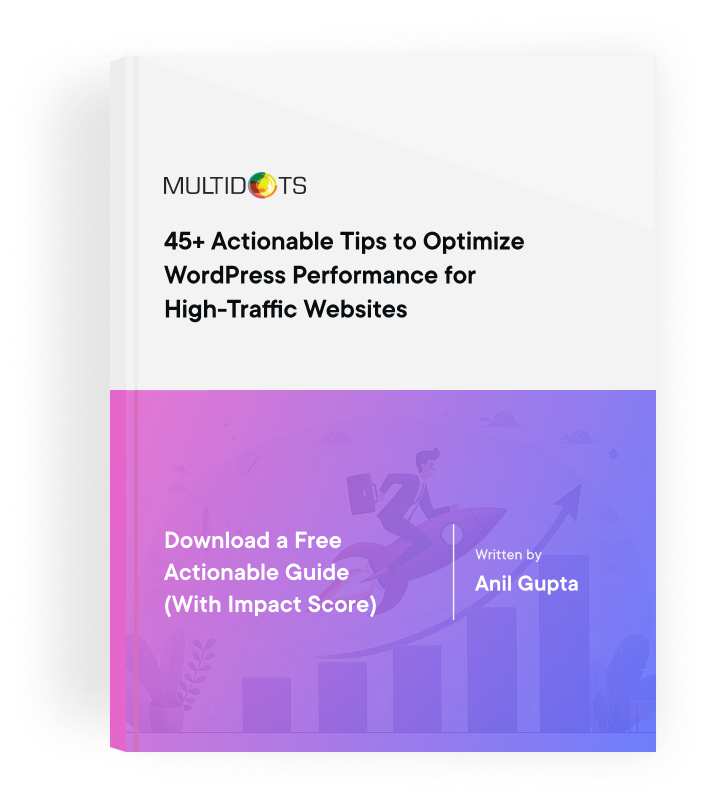Sitecore vs AEM: Crucial Differences You Need to Know
Discover the key differences between Sitecore and AEM to make the best choice for your enterprise CMS needs

Table of Contents
Choosing the right Content Management System (CMS) is so important for enterprise-grade websites. Adobe Experience Manager (AEM) powers 5.3% of the top 1000 sites, making it more popular compared to Sitecore’s 0.4% market share. Both platforms are used by high-traffic, large enterprises (thanks to their scalability, advanced personalization, integration capabilities, and extensive support), but the choice between Sitecore and AEM can significantly impact business operations.
We are going to compare Sitecore vs AEM, and take a look at the key differences you need to know before you choose. We’ll also take a look at a solid alternative to both, to keep your options open!
Introduction to Digital Experience Platforms
Digital Experience Platforms (DXPs) are comprehensive software solutions designed to help organizations manage and deliver engaging customer experiences across various channels, including web, mobile, email, and more. By integrating a wide range of tools and technologies, DXPs enable businesses to create, orchestrate, and optimize digital experiences that are both personalized and consistent, no matter where the customer interacts with the brand.
Adobe Experience Manager (AEM) and Sitecore are two of the most prominent digital experience platforms on the market, each offering robust capabilities to support digital transformation initiatives. These platforms go beyond basic content management by providing advanced features for personalization, analytics, and campaign management, empowering businesses to deliver tailored digital experiences that drive customer engagement and loyalty.
With the ability to unify data, content, and customer insights, DXPs like AEM and Sitecore help organizations adapt to evolving customer expectations and deliver seamless experiences across various channels. As businesses continue to prioritize digital transformation, choosing the right digital experience platform is essential for building strong customer relationships and achieving long-term growth.
Content Management, Digital Asset Management, and Personalization: Sitecore vs AEM
Both Sitecore and AEM offer intuitive WYSIWYG (What You See Is What You Get) interfaces, making content management straightforward for users without needing to get technical. Both platforms are designed with a user friendly interface, empowering content authors with easy content creation and management. Both platforms also support headless capabilities, allowing content to be delivered across multiple channels. In addition, both Sitecore and AEM help manage content efficiently across multiple channels, streamlining workflows for digital web content.
Sitecore XP is known for its advanced personalization features, including AI-driven personalization that tailors content to individual site visitors, enabling unique 1-on-1 experiences. This capability is essential for businesses aiming to enhance user engagement and conversion rates by delivering a personalized experience and a customized and personalized experience for users.
AEM, on the other hand, is great at creating real-time customer profiles and offers cross-channel analytics capabilities. AEM’s integration with other Adobe products further enhances its personalization capabilities, allowing for a more cohesive and tailored user experience across various platforms. Both platforms enable the creation of tailored content and personalized customer experiences, leveraging customer data and behavior to optimize the customer journey.
In terms of Digital Asset Management (DAM), both CMSs provide efficient functionality, but they aren’t without their differences. Both platforms excel at providing centralized content management, which is crucial for organizing and distributing digital web content. AEM Assets is tightly integrated with Adobe‘s ecosystem of creative and marketing tools, offering a smooth workflow for users already using Adobe products. Sitecore Content Hub, however, places a stronger emphasis on integrating with other marketing technology systems through its open APIs and connectors, making it a versatile option for businesses with diverse tech stacks. AEM is also recognized as a comprehensive content management solution, enabling businesses to create, manage, and optimize digital content across multiple channels.
Both platforms also support headless capabilities, enabling organizations to deliver content and ensure digital experience delivery across multiple channels, devices, and touchpoints for consistent and personalized user experiences.
While both Sitecore and AEM offer great content management and personalization features, their strengths vary. Both platforms support customer journeys and the customer journey through advanced analytics and personalization, helping businesses understand and optimize interactions across channels. Sitecore stands out with its AI-driven personalization and 1-on-1 user experiences, whereas AEM is great for real-time customer profiles and tight integration with Adobe’s ecosystem. Your choice will depend on your specific needs for personalization, integration, and existing technology infrastructure!
Ultimately, both platforms are robust cms platforms that go beyond basic cms features, supporting advanced marketing strategies and digital marketing initiatives through integrated marketing suites, automation, and analytics.
Technology Stack and Integration Capabilities
Understanding the underlying technology stack is important when choosing a CMS, as it impacts integration capabilities, performance, and suitability for your existing infrastructure. The tech stack of each platform also determines how easily it can be integrated and customized to fit your business needs.
| Feature/Aspect | Sitecore | AEM |
|---|---|---|
| Framework | Built on the Microsoft ASP.NET framework (.NET framework). | Java (using the Apache Sling framework). |
| Programming Language | C# | Java |
| Database | SQL Server for content storage. | Java Content Repository (JCR). |
| Integration Options | Highly integrated platform. Integration options through its xConnect API framework and MarTech systems, including CRM, marketing automation, and analytics tools. Pre-packaged integrations with popular third-party software like Salesforce and Microsoft Dynamics. Support for custom integrations through Sitecore’s Technical Alliance Program partners. Sitecore is compatible with diverse technology stacks and existing systems, making it adaptable for organizations with complex infrastructures. Its modular architecture supports smooth integration with third-party tools and technologies. | Part of Adobe Experience Cloud. Integration with Adobe tools like Adobe Analytics, Adobe Target, and Adobe Campaign. Integration with third-party systems through REST APIs and OSGi modules. Enhanced integration for enterprises using the Adobe ecosystem, enabling seamless Adobe ecosystem integration. |
Think about the existing knowledge and skills of your development team when choosing. Sitecore’s Microsoft-based technology stack may be more familiar to developers with a .NET background, while AEM’s Java-based framework might appeal to those experienced with Java. Of course, if your business already relies heavily on Adobe tools, AEM’s seamless integration with the Adobe ecosystem could be a deciding factor! When choosing a platform, the ability to achieve smooth integration with existing systems is crucial for long-term scalability and efficiency.
Scalability and Performance Comparison
Sitecore is well-regarded for its ability to handle high traffic volumes and large data sets. Features that enhance Sitecore’s scalability include horizontal and vertical scaling capabilities, which allow businesses to add more servers or increase the capacity of existing ones to manage increased load. However, one limitation of Sitecore is its lack of dynamic scaling capabilities, meaning that scaling must be planned and executed manually rather than automatically responding to traffic spikes.
AEM is great at dynamic scaling, particularly in the Cloud environment, which enables automatic adjustments to resource allocation based on real-time demand. This feature ensures optimal performance during traffic surges without manual intervention. AEM is highly effective in handling large-scale projects and high traffic loads, benefiting enterprises that require reliable performance. Additionally, AEM’s capabilities as a Headless CMS support horizontal scaling, allowing content to be distributed efficiently across multiple channels, delivering content seamlessly to various devices and touchpoints.
| Pros | Cons | |
|---|---|---|
| Sitecore | Strong horizontal and vertical scaling capabilities, suitable for handling high traffic and large data sets. | Lack of dynamic scaling capabilities requires manual intervention for scaling. |
| AEM | Dynamic scaling in Cloud environments, excellent performance for large-scale projects, effective horizontal scaling as a Headless CMS, and robust digital experience delivery at scale. | Typically more complex and potentially more costly to implement than static scaling solutions. |
Pricing Models and Total Cost of Ownership
Proprietary vs Open Source Costs
Both Sitecore and AEM are proprietary software, meaning users must pay a license fee to use them. This is more limiting than using an open-source platform like WordPress, as proprietary software often leads to vendor lock-in, making it difficult for users to switch platforms if they are dissatisfied. Along with this, users do not own the software, just license it, making them vulnerable to price hikes. Proprietary software typically incurs higher costs than open-source alternatives due to licensing fees and additional expenses for features and support.
Initial Costs and Licensing
Sitecore's licensing model is typically based on the number of server installations and the scale of deployment. The initial licensing fees vary depending on the enterprise's specific needs and scale. There may also be additional costs for essential features or modules that are not included in the base license, which can add to the overall expense.
AEM is part of the Adobe Marketing Cloud and follows a subscription-based pricing model. AEM's initial costs are generally higher compared to Sitecore and can escalate based on the number of users, server instances, and additional Adobe products integrated. The subscription model means ongoing costs can accumulate, particularly for enterprises needing extensive Adobe ecosystem integrations.
Steep Learning Curve and Support
Both Sitecore and AEM have significant learning curves to think about. Sitecore, known for its flexibility and customization options, requires quite a bit of learning, especially for developers. The extensive possibilities for personalization and integration require a deep understanding of the platform, which can be time-consuming to acquire.
AEM also offers a good set of tools, which, while powerful, can be overwhelming for non-technical users. Navigating its comprehensive features and integrations may require substantial training and expertise.
One advantage of closed-source CMSs like Sitecore and AEM is their dedicated support teams, which can provide specialized assistance and troubleshooting. However, while both platforms have community support, it is significantly smaller compared to open-source competitors like WordPress. This means fewer third-party resources, plugins, and forums for troubleshooting and advice.
Digital Asset Management and the Adobe Ecosystem
Digital Asset Management (DAM) plays a pivotal role in the success of any digital experience platform, enabling organizations to efficiently manage, organize, and distribute digital assets such as images, videos, and documents across multiple channels. Adobe Experience Manager (AEM) stands out in this area by offering a powerful DAM solution that is deeply integrated with the broader Adobe ecosystem.
With AEM’s digital asset management capabilities, businesses can streamline their entire content creation process—from ideation and design in Adobe Creative Cloud to analytics and optimization with Adobe Analytics. This seamless integration allows teams to collaborate more effectively, maintain brand consistency, and accelerate the delivery of personalized experiences to customers.
AEM’s centralized content management ensures that all digital assets are easily accessible and reusable, reducing duplication and improving workflow efficiency. By leveraging the full suite of Adobe tools, organizations can enhance their digital strategy, meet customer expectations for exceptional digital experiences, and drive higher engagement and revenue. The ability to provide personalized experiences at scale, supported by robust content management and seamless integration with the Adobe ecosystem, makes AEM a top choice for enterprises aiming to deliver outstanding digital experiences across every touchpoint.
WordPress: A Better Alternative
We can’t talk about CMSs without mentioning WordPress. It is used by 43.5% of all websites, so it is fully worth considering as a superior alternative for several reasons:
Cost Efficiency
WordPress is open source, meaning it doesn't require expensive licensing fees like Sitecore and AEM. This can lead to significant savings in both initial setup and ongoing maintenance costs. The money saved can be redirected to other business areas, enhancing your overall return on investment (ROI).
Flexibility, Customizability, and Integration
WordPress offers a vast library of plugins and themes, providing almost unlimited customization options. Businesses can tailor their websites to specific needs and user preferences, designing completely custom sites without being limited by the constraints of proprietary CMSs. WordPress also supports extensive integration opportunities with third-party tools, making it highly versatile.
Ease of Use
WordPress has an intuitive user interface, making it accessible for non-technical users. Compared to the steep learning curves we’ve seen above, WordPress is much easier to manage and use. There is also a wealth of documentation and a large community of users who provide support, further simplifying the learning process!
SEO Benefits
WordPress is inherently optimized for search engines, which improves website visibility and ranking. It includes built-in SEO features and supports popular SEO plugins like Yoast SEO, which can enhance your site's search performance. Better SEO leads to increased organic traffic and, ultimately, business growth.
Migrate with Multidots
At Multidots, we bring extensive experience in WordPress development and migration projects. Our team is skilled in transitioning complex enterprise websites from platforms like Sitecore and AEM to WordPress, making sure your migration is handled with precision and expertise.
Our migration process is designed for a smooth transition with minimal disruption to your business operations. We follow a step-by-step approach to ensure everything runs smoothly:
- We start with a thorough assessment of your current CMS and develop a detailed migration plan tailored to your specific needs.
- Using advanced tools and best practices, we handle the migration of data, content, and assets while ensuring data integrity and accuracy.
- We then meticulously map your existing content to the new WordPress structure and set up URL redirects to preserve SEO value and user experience.
After the migration is complete, Multidots provides ongoing support and maintenance services to keep your WordPress site running smoothly. Our team offers continuous improvement and optimization services to ensure your website remains up-to-date and performs at its best!
Which Platform Suits Your Enterprise Best?
When choosing a CMS for your enterprise, it’s important to think about several factors: your specific requirements and priorities, budget constraints, the need for a SaaS solution, ease of use, and your team’s existing knowledge of coding languages. Ultimately, your choice should be based on your unique business needs and how well the platform supports your long term digital strategy.
Both Sitecore and AEM are powerful, enterprise-grade options, each offering features tailored to large organizations. However, WordPress is by far the best choice for businesses of all sizes. Its cost efficiency, flexibility, user-friendliness, and built-in SEO benefits make it an excellent option for those looking for a more adaptable and cost-effective CMS solution. It is crucial to ensure that the platform aligns with your organization's goals, including scalability and integration with your existing systems.
To explore why WordPress might be the best fit for your enterprise and how Multidots can help with your move, get in touch with us today! When comparing Adobe Experience Manager and Sitecore, consider how each platform addresses your business needs to make an informed decision.
Feel free to schedule a quick call with our migration expert.
Contact Us
